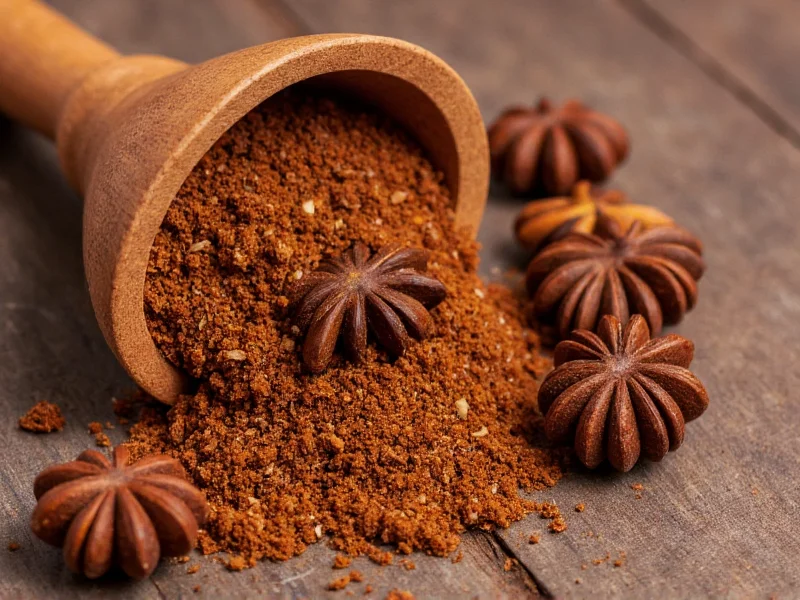Many home cooks mistakenly believe allspice is a pre-mixed combination of spices due to its name. This common misconception stems from the spice's complex flavor profile that evokes multiple warming spices. Understanding what allspice is made of clears up confusion between genuine allspice and commercial spice blends sometimes mislabeled as “allspice.”
The True Origin of Allspice
Allspice comes from the Pimenta dioica plant, an evergreen tree in the myrtle family that thrives in tropical climates. Native to Jamaica, southern Mexico, and Central America, this tree produces small green berries that harvesters pick before ripening. These immature berries contain the essential oils responsible for allspice's distinctive aroma and taste.
Harvesting and Processing Allspice Berries
The transformation from berry to spice involves careful timing and traditional methods:
| Stage | Process | Duration |
|---|---|---|
| Harvesting | Hand-picking unripe green berries | Twice yearly during dry seasons |
| Drying | Spreading berries in sun or using low-heat ovens | 6-14 days |
| Color Change | Berries turn from green to reddish-brown to dark brown | During drying process |
| Final Product | Dried berries with 8-10% moisture content | Ready for packaging |
During drying, enzymatic reactions develop the complex flavor compounds that give allspice its characteristic warmth. The finished product—small, hard, dark brown berries about 5mm in diameter—contains concentrated essential oils including eugenol (also found in cloves), caryophyllene (present in black pepper), and terpenes that create its multi-dimensional taste.
Why Is It Called Allspice If It's a Single Spice?
British explorers in the 1600s named this Jamaican spice “allspice” because its flavor profile resembles a combination of cinnamon, cloves, and nutmeg. The dried berries naturally contain chemical compounds found in these individual spices, creating an impression of a blend when none exists. This historical naming convention persists despite causing ongoing confusion about what allspice is made of.
Authentic Allspice vs. Spice Blends
When exploring what allspice is made of, it's crucial to distinguish genuine allspice from:
- True allspice: Solely Pimenta dioica berries (sometimes labeled as “Jamaican pepper”)
- Mixed spice: A British blend typically containing cinnamon, coriander, caraway, and nutmeg
- Pumpkin pie spice: An American blend of cinnamon, ginger, nutmeg, and cloves
Commercial products labeled “allspice” in some regions may actually be blends, particularly outside Jamaica and the Caribbean. Always check ingredient lists when purchasing to ensure you're getting pure Pimenta dioica berries if that's what your recipe requires.
Culinary Applications of Genuine Allspice
Chefs worldwide value allspice for its versatility. In Caribbean cuisine, it's essential for jerk seasoning and pickling. Middle Eastern dishes incorporate it into meat rubs and rice preparations. European bakers use it in fruitcakes and mulled wines. The whole berries maintain flavor longer than ground allspice, which loses potency within six months.
Proper Storage for Maximum Flavor
To preserve allspice's complex flavor compounds:
- Store whole berries in airtight containers away from light and heat
- Keep ground allspice in the freezer for extended freshness
- Grind berries immediately before use for strongest flavor
- Avoid humid environments that accelerate flavor degradation
Properly stored whole allspice berries retain optimal flavor for 2-3 years, while ground allspice maintains quality for 6-12 months. The essential oils responsible for allspice's characteristic warmth gradually evaporate once ground, explaining why many chefs prefer grinding berries fresh.
Substitutes When Allspice Isn't Available
If you're wondering what allspice is made of because you need a substitute, combine:
- 1 part ground cinnamon
- ½ part ground cloves
- ¼ part ground nutmeg
This approximation captures allspice's signature flavor profile but lacks the nuanced complexity of genuine Pimenta dioica berries. For Jamaican recipes specifically, substitutes won't replicate authentic flavor, as Jamaican allspice contains unique terpene compounds developed in the island's volcanic soil.
Common Questions About Allspice Composition
Is allspice really made from multiple spices?
No, authentic allspice contains only one ingredient: dried berries from the Pimenta dioica tree. The name comes from its flavor profile resembling multiple spices, but it's a single botanical product with no additional spices blended in.
What gives allspice its complex flavor if it's just one spice?
Allspice berries naturally contain multiple essential oils including eugenol (found in cloves), caryophyllene (in black pepper), and various terpenes. These compounds create a flavor profile that simultaneously evokes cinnamon, cloves, and nutmeg without any actual blending.
Why does some allspice taste different from other brands?
Authentic allspice comes primarily from Jamaica, where volcanic soil and climate create berries with optimal flavor compounds. Allspice grown in other regions may have different flavor profiles. Additionally, some commercial products labeled as allspice are actually spice blends, which explains taste variations between brands.
Can I make my own allspice by blending other spices?
While you can create a reasonable approximation using cinnamon, cloves, and nutmeg, you cannot replicate genuine allspice. The unique combination of compounds in Pimenta dioica berries creates flavor notes that don't exist in individual spices or their simple blends. For authentic Caribbean dishes, real allspice berries are essential.
Does allspice contain any additives or preservatives?
Pure allspice contains only Pimenta dioica berries with no additives. However, some commercial products labeled as allspice may include anti-caking agents or be blended with other spices. Always check ingredient labels to ensure you're getting pure allspice if that's what your recipe requires.











 浙公网安备
33010002000092号
浙公网安备
33010002000092号 浙B2-20120091-4
浙B2-20120091-4